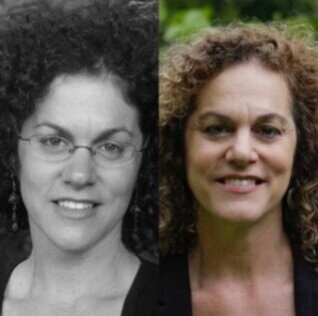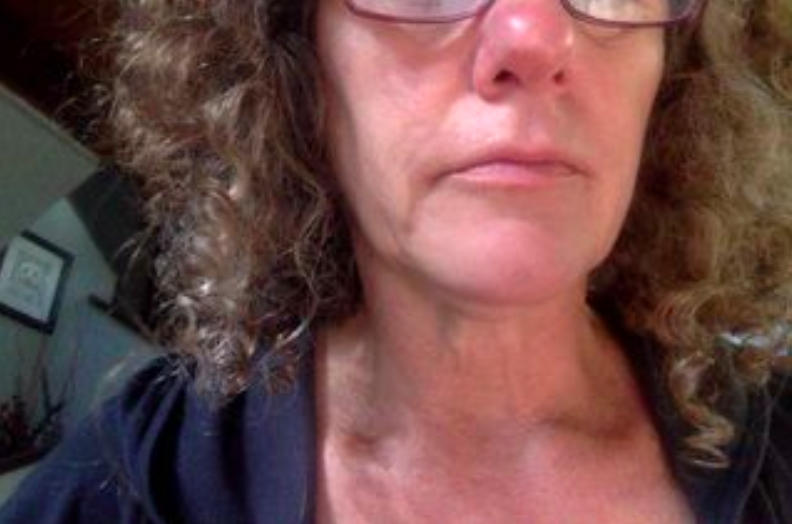My Aging Face Is Not FaceApp'd
Published July 2019 in Psychology Today
Me in 2004 and in 2018
I want to talk about what it is like to be inside an aging, female face. Disclaimer: This is NOT a blog about FaceApp, the uber-briefly, uber-popular app that hurls faces rapidly across several, unflattering decades for the mere price of handing over one’s identity to who knows what organization. FaceApp has stirred interest in facial aging, however, and I appreciate that.
I have an unusual perspective on facial aging. As an expert on facial expression, I’ve studied facial behavior scientifically for decades. As a long-time meditator, I’ve observed my own experiences and actions from the inside. As a woman who is both of these things and lives in a youth-obsessed society that promotes unrealistic beauty standards, wearing an aging female face is a sobering journey of discovery as well as a lesson in self-compassion.
The overall changes in my aging face are more gradual than any app projection, but the noticing of them is not. I have experienced quantum leaps in how old I look to myself. All of a sudden, I’ll see something that I hadn't noticed before. In a glimpse of myself in the mirror, out of the corner of my eye, something suddenly looks different. A line or fold or droop in my face that seems new. I can identify a number of discrete moments of noticing some facial change that marks the path to old lady-hood:
20s: in a certain light there are fine lines running across my forehead!
30s: I did not notice anything specific in my 30s? I was having babies and being a young professor – maybe dark circles? I cannot recall.
40s: noticing for the first time that I look tired when I am not tired at all! This observation will continue and will be shared by concerned others who worry if I am getting enough rest. My reply, “I’m not tired, I’m just old.”
Early 50s: I am getting marionette lines – and jowls?!
Mid 50s: My eyes look old. They are “getting smaller,” as a friend once said of her own, as the upper eyelid skin droops over the eye and the area underneath my eye gets baggier by the year. This eye change is why I look tired.
YES, it is a privilege to age – many do not get the chance. And YES emphasis on appearance is superficial, but looks and youth influence all kinds of professional and personal outcomes. Further, women have internalized the external gaze of others onto themselves through the lens of a culture that imposes unrealistic standards of youth and beauty onto them. The resulting self-evaluative emotions impair performance and erode well-being.
There are biological reasons for what happens to the face with age, including but not limited to: a loss of subcutaneous fat, loss of skin elasticity, slowing in cell turnover rates, changes in collagen and vascularization, and loosening of the skin from underlying tissues. The cumulative effects of skin-harming behaviors, such as poor diet, insufficient water intake, alcohol and substance use, and too much sun, accelerate the signs of aging in the face. And get this – at a time when everything else on your body is shrinking, your nose and ears get bigger with time. Oh joy!
In my aging face, I can see how certain appearance changes due to aging resemble the appearance changes from certain facial actions that have emotional relevance. So the age-related changes impart an affective quality to the changes in appearance, which has little to nothing to do with how I actually feel. In fact, older faces in a neutral pose are often seen as angry or sad, likely for specific anatomical reasons.
Bad selfie of my glabellar furrow
The permanent, vertical lines between my brows (glabellar furrows) are similar to the folds that appear when the brows are pulled together, which is Facial Action Coding System action unit 4 (AU4). AU4 is key to the upper face of anger. So these lines can make me look angry, even when I am not.
Bad selfie showing my "marionette" lines
As a result of the general loosening of the skin from the flesh and the loss of subcutaneous fat, my cheeks have begun to droop a bit (unless I'm smiling). Shadows cast from these droopy cheeks are called “marionette lines” in cosmetic surgery circles. These lines and the drooping cheeks themselves resemble the action of the lip corners being pulled down (FACS AU15), which is part of a common sadness expression. But my lip corners are not pulled down – my cheeks are just subject to the effects of gravity (just like my boobs!).
In my fifties, when I’ve decided to stop coloring my hair and to allow my face to age without intervention, I’ve noticed that I’m not aging quite as gracefully as my mother. All my life I’ve looked like Mom, who has aged really well! I always felt I carried my dear departed father inside me – in my generosity, my temper, and my analytic mind.
So why do I have such bags under my eyes and such papery skin sagging over them at 54? Mom is in her 80s and her eyes look younger than mine! When I look more deeply at my eyes, I notice something new. I see my father looking back at me. I have Dad’s eyes – kind, wise, old. Why would I ever want them to be any different than they are right now?


